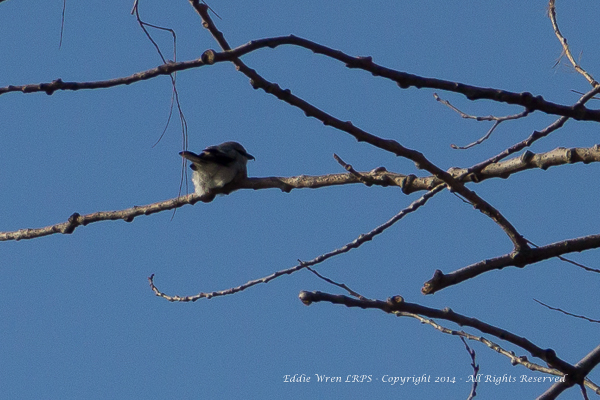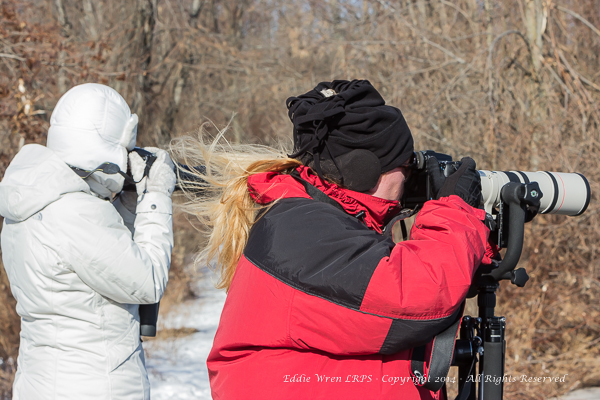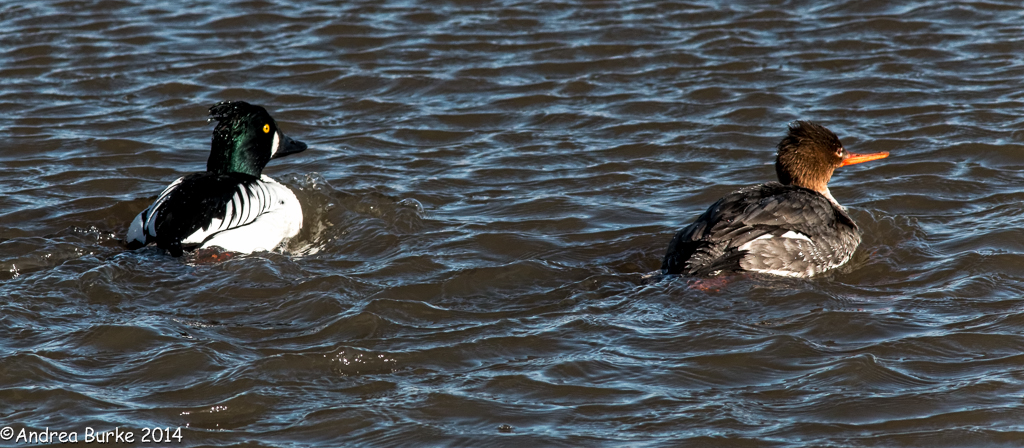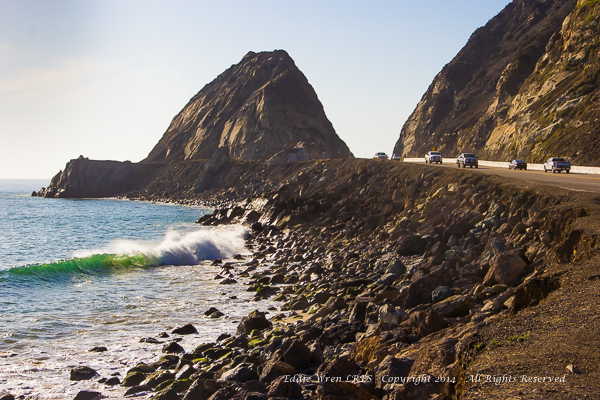Today’s WWNP group visit to the Montezuma NWR in the Finger Lakes region of New York State was a gem, both in terms of the weather and the 41 bird species seen.

About half of the group when we first arrived
When we arrived, about 8:00am, the sun was in a cloudless sky but there was still a fairly significant frost lying and large areas of the ponds were still under ice. Initially we all went on the ‘Wildlife Drive’ around the Main Pool, which turned up a wealth of waterfowl, a solitary wader (lesser yellowlegs) and countless industrious muskrats. After that, our five cars went their separate ways to various viewing areas and we re-grouped at noon, for lunch and a laugh, followed by a second trip around the preserve.

Trumpeter Swans. Copyright 2014, Eddie Wren, all rightes reserved.

Northern Harrier (female). Copyright 2014, Eddie Wren, all rightes reserved.

Lesser Yellowlegs. Copyright 2014, Eddie Wren, all rightes reserved.
The birds seen were:
- Trumpeter Swan
- Snow Goose
- Canada Goose
- Green-winged Teal
- Blue-winged Teal
- Mallard
- American Black Duck
- Northern Pintail
- Northern Shoveller
- Gadwall
- American Wigeon
- Ring-necked Duck
- Greater Scaup
- Bufflehead
- Hooded Merganser
- Ruddy Duck (David G.)
- Pied-billed Grebe
- Double-crested Cormorant
- Great Egret (Susan W.)
- Osprey (at nest sites and flying)
- Bald Eagle (including a surprising group of 11 immatures)
- Northern Harrier
- Red-tailed Hawk
- American Kestrel
- American Coot
- Sandhill Crane
- Killdeer
- Lesser Yellowlegs
- Ring-billed Gull
- Herring Gull

Bufflehead (male). Copyright 2014, Eddie Wren. All rights reserved.
- Rock Pigeon
- Mourning Dove
- Eastern Kingbird
- Blue Jay
- American Crow
- Tree Swallow (migrating flock)
- American Robin
- European Starling
- Song Sparrow
- Red-winged Blackbird
- Common Grackle

Muskrat. Copyright 2014, Eddie Wren. All rights reserved.
If anyone who was with us at Montezuma has any more species’ names that need to be added to this list, please just let me know.
Similarly, would all the photographers who were in the group — i.e. most of you! — kindy forward two or three of your best shots to me so we can make a gallery of the day’s images that aren’t just by Andrea and I…. please! {:-)
Speaking of Andrea, she has already sent me some great photos which I will be posting as soon as I can on page two of this day’s write-up and these will then be linked here.
- Gallery of photos by Kathy Fenna, Esther Kowal-Bukata and Andrea Burke: click here
Eddie — 6 April, 2014



















